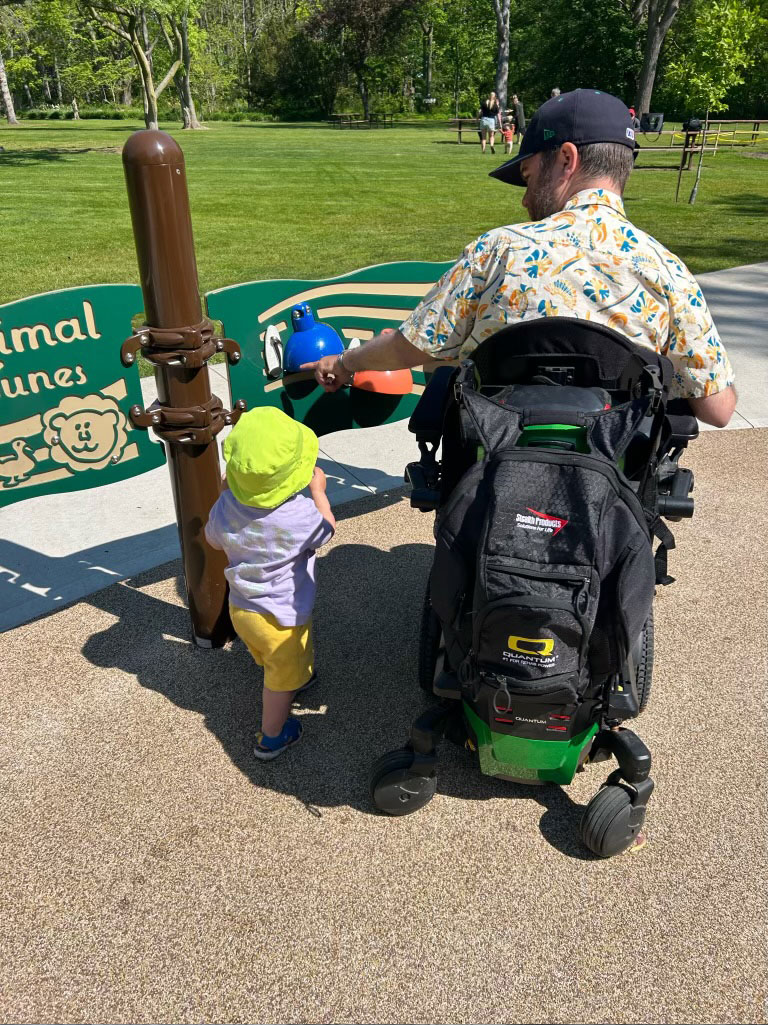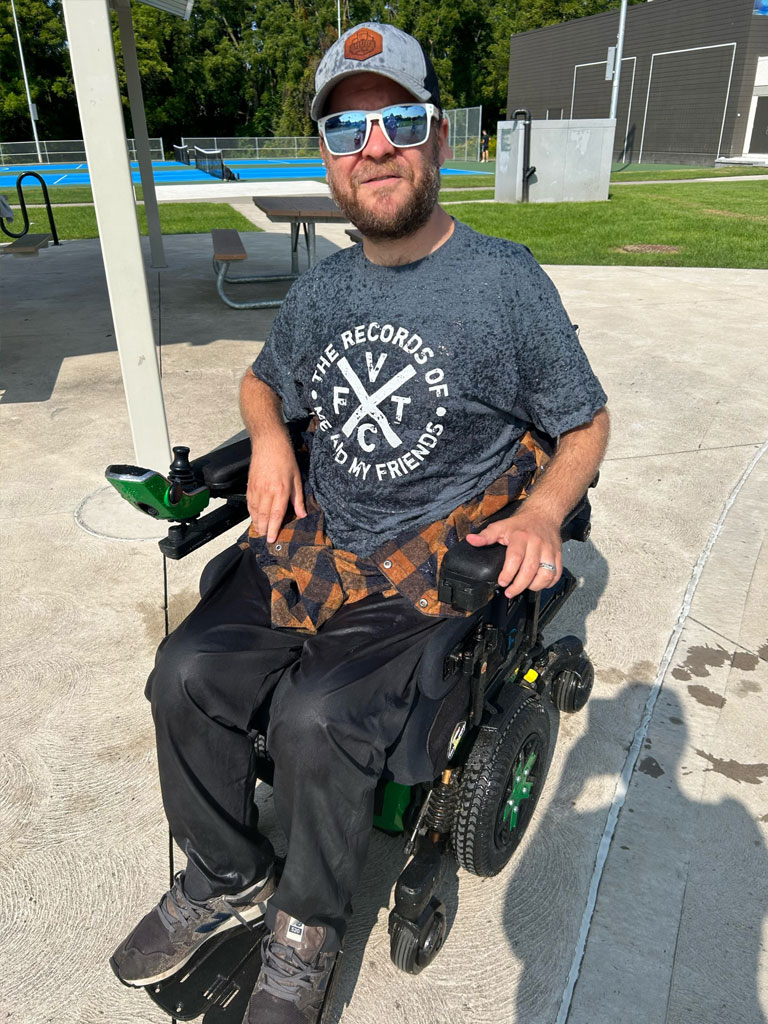Life at iLevel Canada



What Makes a Playground Accessible?
by Jared Wayland
What Makes a Playground Accessible?
As we discussed in my last blog, playgrounds are absolutely vital spaces for children to explore, socialize, and develop essential skills. However, not all playgrounds are created equal when it comes to accessibility for disabled children and their parents. In this blog I’ll go over what I think makes a playground inclusive and accessible, ensuring that children and parents of all abilities can enjoy it.
Thoughtful Design and Layout: A good accessible playground starts with thoughtful design and layout. Paths, ramps, and entrances should be wide enough to accommodate wheelchairs and mobility aids and free of barriers. The layout should be organized and have somewhat of a ‘flow’, making it easy for children and parents to navigate the space effortlessly.
Surfaces and Ground Materials: This is an important one! The ground surface of the playground should be made of materials that are safe, firm, and slip resistant. I have found that rubberized surfaces or poured-in-place rubber provide excellent cushioning, reducing the risk of injuries and ensuring smooth mobility for wheelchair users. There’s nothing worse than showing up to a playground where the ground is made of pebbles or woodchips because it is extremely hard (if not impossible) to navigate in a wheelchair.
Inclusive Play Equipment: Incorporating a variety of inclusive play equipment is crucial. This includes swings with accessible seats, merry-go-rounds with wheelchair spaces, and ground-level play activities that don't require climbing. The equipment should have clear pathways and proper spacing to allow wheelchair access.
Sensory Play Opportunities: Another big part of an accessible playground is incorporating sensory play elements. These can be things like musical panels, textured surfaces, and interactive displays. These elements provide inclusive play experiences for children with sensory-related challenges, while also acting as another play element that is accessible to anyone!
Shade and Seating: Providing shaded areas with comfortable seating is important for parents, especially those with disabilities, to rest and supervise their children. Picnic tables and benches should be designed with adequate space for wheelchair users and should be dispersed throughout the playground.
Accessible Bathrooms and Facilities: Accessible restrooms and changing facilities are so important at a public park. These facilities should be designed following accessibility guidelines, with features such as grab bars, ample space for maneuvering, and appropriate height counters and sinks.
Inclusive Signage and Communication: Clear and visible signage with easy-to-read fonts and symbols is essential. Braille and tactile signage should be used to ensure inclusivity for children and parents with visual impairments.
Engagement and Community Involvement: Involving the community, including disabled parents and children, in the design and planning process can lead to valuable insights and ideas. Their input can help create a playground that truly meets the diverse needs of everyone in the community. Here in St. Catharines for example, the Accessibility Advisory Committee plays a role in the design and development of public spaces.
To round things out, by integrating thoughtful design, inclusive play equipment, and sensory elements, and considering the needs of disabled parents as well, we can create a playground that fosters a sense of belonging and fun for everyone. Investing in inclusive playgrounds is not only a step towards a more accessible society but also a way to celebrate diversity and enhance communities.
